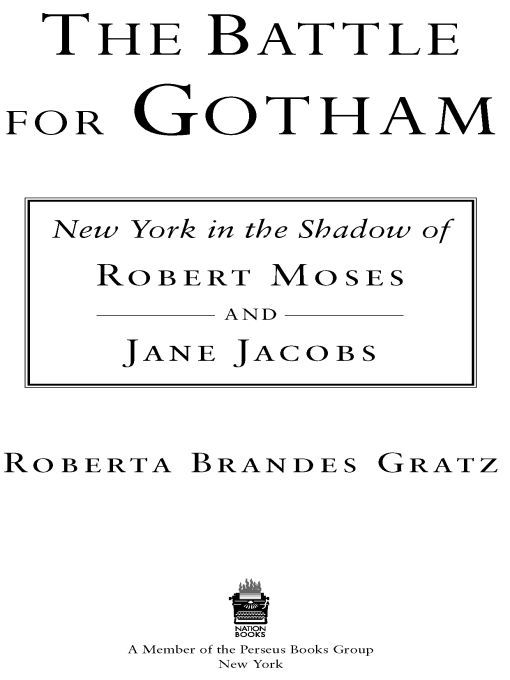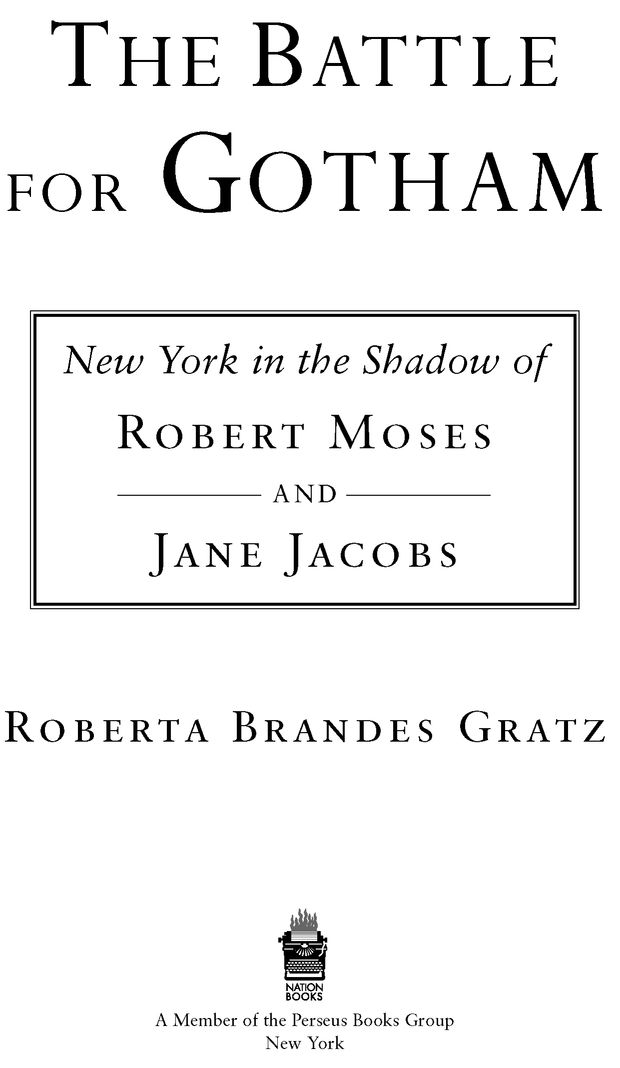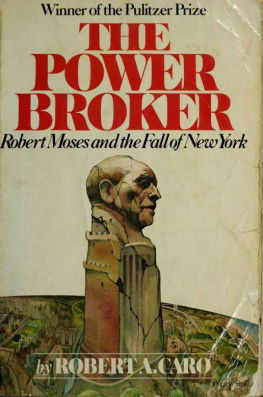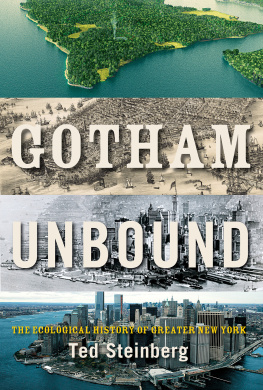Table of Contents
ALSO BY ROBERTA BRANDES GRATZ
The Living City: Thinking Small in a Big Way (1989)
Cities Back from the Edge: New Life for Downtown (1998)
A Frog, A Wooden House, A Stream and A Trail:
Ten Years of Community Revitalization in Central Europe (2001)
For Jane
Never underestimate the power of a city to regenerate.
JANE JACOBS
Acknowledgments
I have always relied on various urban thinkers and observers to inform and challenge my own observations and ideas. For this book, I am similarly indebted to a wonderfully patient and generous group who enriched the substance of this book.
Until her death, Jane Jacobs was a critical sounding board. Ron Shiffman and Richard Rabinowitz have been key in both of my earlier books as well as this one. Mary Rowe has both challenged and encouraged the details of this book in the best tradition of Jane Jacobs. Anthony Mancini has been my first reader and essential critic for this, as well as the two prior books, often saving me from myself. Thomas Schwarz, another reader of both prior works, challenged an early iteration of this one that helped me rethink its direction. Victor Navasky, as well, offered insights at an early point that clarified and changed the direction I needed to follow.
Nancy Milford, Nancy Charney, Laurie Beckelman, Stephen Goldsmith, Sandra Morris, and Margie Ziedler have been nurturing friends critical to the writing process. I am indebted to Robert Caro for opening my eyes and the worlds eyes to the overarching power of Robert Moses.
I am enormously appreciative of Hamilton Fish, president of Nation Books, for being so ready and eager to publish this book and for turning me over to an extraordinary editor, Carl Bromley. Carl exemplifies the best qualities of an interested, caring, insightful, and nurturing editor whose comments and observations about all aspects of this text were most useful and constructive. I am similarly indebted to Basic Books publisher John Sherer for understanding what I planned to do and for being so interested in publishing this book. Annette Wenda, the copyeditor, Sandra Beris, the production editor, and Brent Wilcox, the compositor, artfully steered this manuscript to life.
Kent Barwick, Eddie Bautista, Marcy Benstock, Mary Beth Betts, Maya Borgenicht, John Bowles, Al Butzel, Joan Byron, Sarah Carroll, Majora Carter, Carol Clark, Joan Davidson, Mort Downey, Coco Eisman, Alexi Torres Flemming, Adam Friedman, Charles Gandee, Michael Gerrard, Francis Golden, Dennis Grubb, Bill Gratz, Isabel Hill, Abbie Hurlbutt, Lynda Kaplan, Jared Knowles, Lex Lalli, Peter Laurence, Corey Mintz, Norman Mintz, Forrest Myers, William Moody, Greg OConnell, Marianne Percival, Bruce Rosen, Michael Rosen, David Rosencrans, Gene Russianoff, Don Rypkema, James Sanders, David Sweeny, Calvin Trillin, Joshua Velez, Mike Wallace, Anthony Wood, Elizabeth Yampierre. Others are mentioned throughout the book.
Sadly, my husband, Donald Stephen Gratz, did not live to see this publication. His ideas and influence, however, are woven throughout this text. I learned from him daily for many years and always appreciated his encouragement of my efforts. The legacy of his talent is reflected herein in the story of Gratz Industries.
My daughtersLaura Beth and Rebecca Susanfabulous mothers, teachers, environmentalists, and preservationistshave always been most important in my life and now their childrenHalina, Frank, Stella, Isaac, and Danielleare a source of great pride and joy. I have no doubt they will all grow to be caring, productive citizens. My son-in-law, Jon Piasecki, an innovative landscape architect and committed environmentalist, is an additional source of pride.
Many people have let me know the value of my first two books and, I hope, they will find similar value here. They are the ones who will initiate the regeneration process wherever they live and work.
Preface
I was born and for the first decade of my life lived in Greenwich Village, the iconic urban neighborhood of crooked streets, historic buildings, diverse residents, and the occasional leafy, cobblestone street.
When I walked to school each day, played in Washington Square Park in the afternoon, visited my father in his dry-cleaning store, bought candy at a nearby newsstand, ran an errand for my mom, and came in from Washington Square Park for dinner when she called me from the sixth-floor window of our apartment house, my life was a page out of urbanist, author, and advocate Jane Jacobss Death and Life of Great American Cities.
When my fathers main store on West Third Street, where all garments were cleaned and pressed, was condemned to make way for an urban renewal housing project, when our apartment house on the south side of Washington Square also was condemned for another urban renewal project, this one for a New York University library, when my father was pushed to relocate his business and the family moved to a Connecticut suburb, my life was a page from the book of master planner and builder Robert Moses, who transformed New York City and State through the twelve appointed positions he held over forty years, from the 1930s to 1970s.
Mine was a classic city childhood of the 1940s and 1950s. New York street life was robust and vibrant, offering a feeling of total safety. I rode the double-decker bus up and down Fifth Avenue to dance class, shopping, and an occasional outing to Central Park. I took the subway to visit friends and, somewhat foolishly, went all the way to Coney Island with two friends and no adult at the age of eight. Washington Square Park was the primary arena for play, hanging out, or roller skating, with a daily stop to say hi to my grandfather on his favorite bench.
Our move to the suburbs was a distressing one. I had trouble fitting in. The difference between city and country was dramatic back then, and it was reflected in my classmates. I stood out like a sore thumb until I caught on to fitting in. The upstate girls college I started at was much the same, and I eagerly returned to New York midstream to complete my undergraduate studies at New York University. Even then, New York still offered a rich experience with endless choices, including city and national politics during John Kennedys election campaign, until I embarked on a newspaper career at the New York Post.
I reveled in covering city life and couldnt believe I was getting paid to learn something new every day. Marriage, children, and brownstone living on the Upper West Side came later, and that too revealed aspects of city life that informed my reporting. This was the 1960s and 1970s: New York was changing, incrementally, I thought, but in retrospect quite dramatically. I was part of and witness to a sea change in city life. On one level, I was oblivious to the major forces driving it. With the hindsight and experience of forty years, I understand those forces now and share that understanding in the pages that follow.
I grew up in the shadow of Robert Moses and Jane Jacobs. Their clashing urban visions shaped postwar New York both directly and indirectly. In turn, that clash of visions helped shape the nation.








